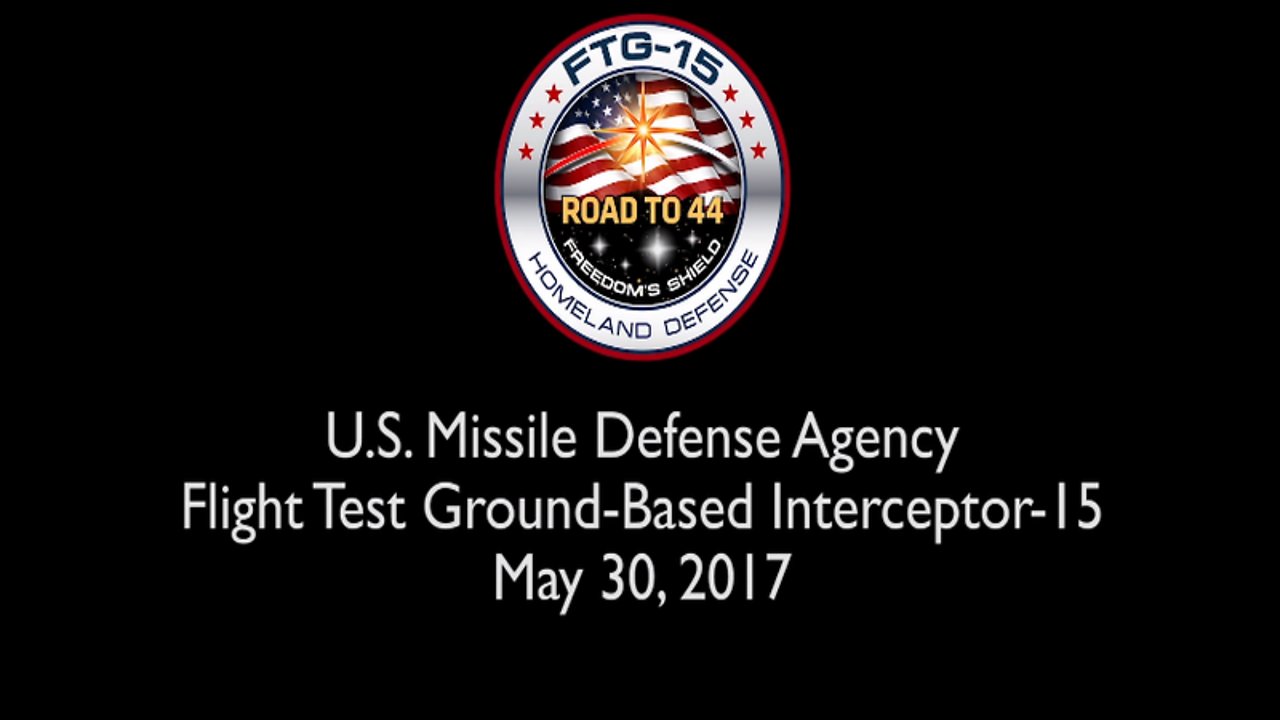Premium Only Content

US Missile Defense System Successfully Intercepts ICBM
The U.S. military on Tuesday successfully conducted a missile defense test involving a simulated attack by an intercontinental ballistic missile, in a major milestone for a program meant to defend against a mounting North Korean threat. The test, designated Flight Test Ground-Based Interceptor FTG-15, was the first live-fire test event against an ICBM-class target the U.S. ballistic missile defense system.
The U.S. Missile Defense Agency, in cooperation with the U.S. Air Force 30th Space Wing, the Joint Functional Component Command for Integrated Missile Defense and U.S. Northern Command, successfully intercepted an intercontinental ballistic missile target during a test of the Ground-based Midcourse Defense (GMD) element of the nation's ballistic missile defense system. A ground-based interceptor was launched from Vandenberg Air Force Base, California, and its exo-atmospheric kill vehicle intercepted and destroyed the target in a direct collision.
For the test, an ICBM-class target was launched from the Reagan Test Site on Kwajalein Atoll in the Republic of the Marshall Islands. Multiple sensors provided target acquisition and tracking data to the Command, Control, Battle Management and Communication (C2BMC) system. The Sea-Based X-band radar, positioned in the Pacific Ocean, also acquired and tracked the target. The GMD system received the target tracking data and developed a fire control solution to intercept the target.
The GMD element of the ballistic missile defense system provides combatant commanders the capability to engage and destroy intermediate and long-range ballistic missile threats to protect the U.S. The mission of the Missile Defense Agency is to develop and deploy a layered ballistic missile defense system to defend the United States, its deployed forces, allies and friends from limited ballistic missile attacks of all ranges in all phases of flight.
AiirSource Military
-
 0:39
0:39
Brigitte Gabriel
3 years ago $111.74 earnedWATCH: Israel’s Iron Dome Aerial Defense System intercepts rocket attacks
23.9K16 -
 1:14:54
1:14:54
Steve-O's Wild Ride! Podcast
10 hours ago $1.97 earnedZac Brown Reveals The Secrets To HIs Success - Wild Ride #247
15.7K6 -
 DVR
DVR
JdaDelete
4 hours ago $0.91 earnedProject Zomboid with the Boys | The Great Boner Jam of 2025
7.59K -
 LIVE
LIVE
SpartakusLIVE
5 hours agoYoung Spartan STUD teams with old gamers for ultimate BANTER with a SMATTERING of TOXICITY
995 watching -
 1:50:39
1:50:39
Kim Iversen
6 hours agoShocking Proposal: Elon Musk for Speaker of the House?! | IDF Soldiers Reveal Atrocities—'Everyone Is a Terrorist'
52.2K84 -
 43:27
43:27
barstoolsports
9 hours agoOld Dog Bites Back | Surviving Barstool S4 Ep. 9
82.1K2 -
 DVR
DVR
Right Side Broadcasting Network
7 days agoLIVE REPLAY: TPUSA's America Fest Conference: Day One - 12/19/24
137K24 -
 1:06:01
1:06:01
Man in America
1 day agoPfizer Has Been Caught RED HANDED w/ Dr. Chris Flowers
32K9 -
 2:24:15
2:24:15
Slightly Offensive
7 hours ago $10.31 earnedAttempted ASSASSINATION of Nick J Fuentes LEAVES 1 DEAD! | Guest: Mel K & Breanna Morello
27.5K16 -
 1:43:08
1:43:08
Roseanne Barr
7 hours ago $18.15 earned"Ain't Nobody Good" with Jesse Lee Peterson | The Roseanne Barr Podcast #79
66K30